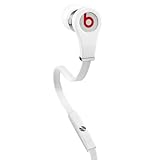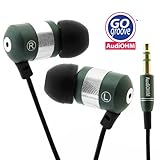Although it positively doesn't receive the attentiveness or press that cell phones receive, a cordless phone can offer a amount of features that can make it requisite in the home or office. A good cordless phone provides the excellent dependability and high quality voice reception of more traditional corded landline phones while treading lightly into the territory of cell phones with the quality to allow users to roam reasonable distances without the tether of outlet connections.
How to make your mind up a Cordless Phone
Certainly selecting a cordless phone is less complex than purchasing some home electronics devices but there are still a amount of options to consider before buying.
Which Type of Cordless Phone?
There are three types of cordless phones on the market: analog, digital, and digital spread spectrum.
An analog phone is the most affordable. They can offer a good signal and reasonable range of use. However, they tend to have more static and buzzing as the user moves away from the base station than a digital phone. In addition, they are less collect as scanners can positively pick up the signal which allows others to listen in.
A digital cordless phone is generally more high-priced than an analog model. However, a digital phone has a stronger signal and good security. Interference is less of a problem for these phones also as they switch channels when interference is detected.
A digital spread spectrum cordless phone digitizes the voice and spreads the signal across several frequencies. These cordless phones are more high-priced but offer the most range, clarity and security.
Are There foremost Statistics to Consider?
Buyers should look at the manufacturer's information as to the operating range of the cordless phone. It is foremost to keep in mind however that conditions can work on the range of the phone as well.
Another foremost thing to compare is the battery stand by time or the life between recharges. Clearly, the longer the battery can go between charges the more flexibility for the user.
Which Frequency Should the Cordless Phone Use?
There are primarily three frequencies used by cordless phones currently on the market. The higher frequencies offer good signal clarity and greater length from the base station at which they are still able to function.
900Mhz models are increasingly rare as phones using other frequencies have become more popular. A 900Mhz cordless phone however is the most affordable and is enough in many homes.
2.4 Ghz models are very common and offer improved sound quality and greater range from the base station as the signals in this band are more "energetic". Buyers should check to see what other frequencies other electronics devices in their home use as sharing the same frequency can cause interference.
5.8 Ghz models offer even good quality sound, greater security, and seldom touch interference. The range of a 5.8Ghz cordless phone may be up to 20 times greater than that of a 900Mhz model or twice that of a 2.4 Ghz model. Because of their first-rate performance, these phones tend to be the most high-priced of the three.
Which Features Are foremost to the Buyer?
There are a large amount of features for buyers to consider when production their choice; just a few examples follow.
Built-in Answering Systems: A cordless phone with a built-in answering principles obviously decreases the need for a cut off gismo to report messages in lieu of voice mail. Most report messages on a microchip to eliminate the need for tape; production them reliable. Just a few of the other associated features consist of multiple mailboxes, remote access to messages, and the quality to report conversations.
Caller Id and Call Waiting with an LCD display
Single Handset, Dual or Expandable Multi-Handset systems: A cordless phone comes with a singular base unit that is plugged into a phone jack and wall outlet. Some systems offer only a singular handset; others offer two handsets, while larger systems offer up to 6 or 8 handsets that operate with the singular base station. further handsets plainly plug into any electrical outlet and allow users more flexibility in where they locate phones at any given time. Multi-handset cordless phone systems allow users to exchange calls from 1 handset to another, use the phone like an intercom system, and ordinarily supply an indicator to show when a line is busy.
speaker Phone functions: Some cordless phones offer speaker phone functions. In addition, some offer other features that are useful for the hearing impaired; such as volume operate and T-coil compatibility with hearing aids.
Convenience features: Just a few of the discrete convenience features are a handset locator function to help find misplaced handsets, a hold function, a lighted keypad, a mute function, voice dialing, speed dialing, and redial. There are even cordless phone models with belt clips and head set connections to make portability even more convenient.
Multi-line operation: For those with multiple lines in their home or small company a cordless phone with multi-line doing can be a requisite feature.
For individuals and businesses searching for a communication option that is dependable, flexible, and highlight rich, cordless phones are a possible solution; filling the gap between cell phones and traditional corded landline phone systems.
How to make your mind up a Cordless Phone

















